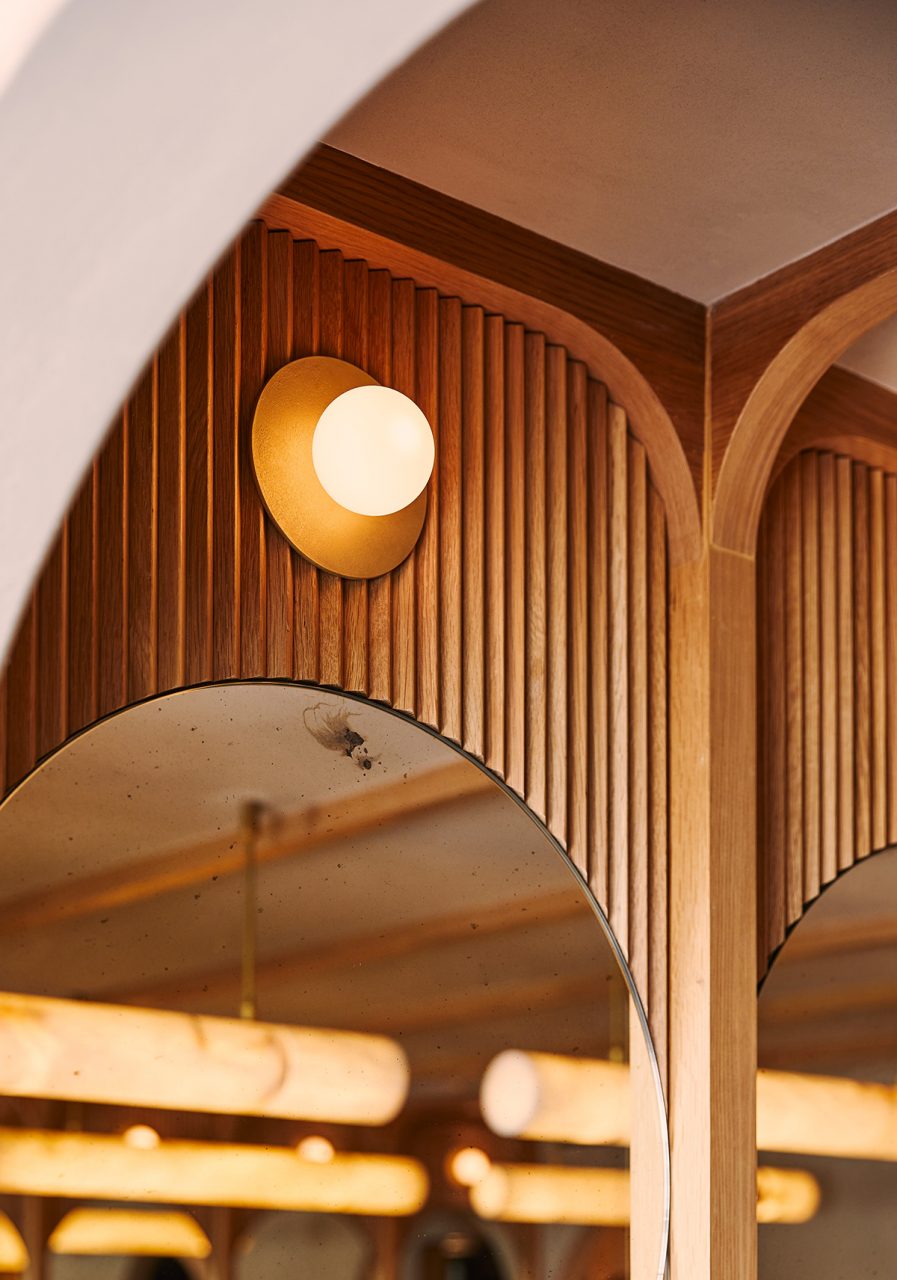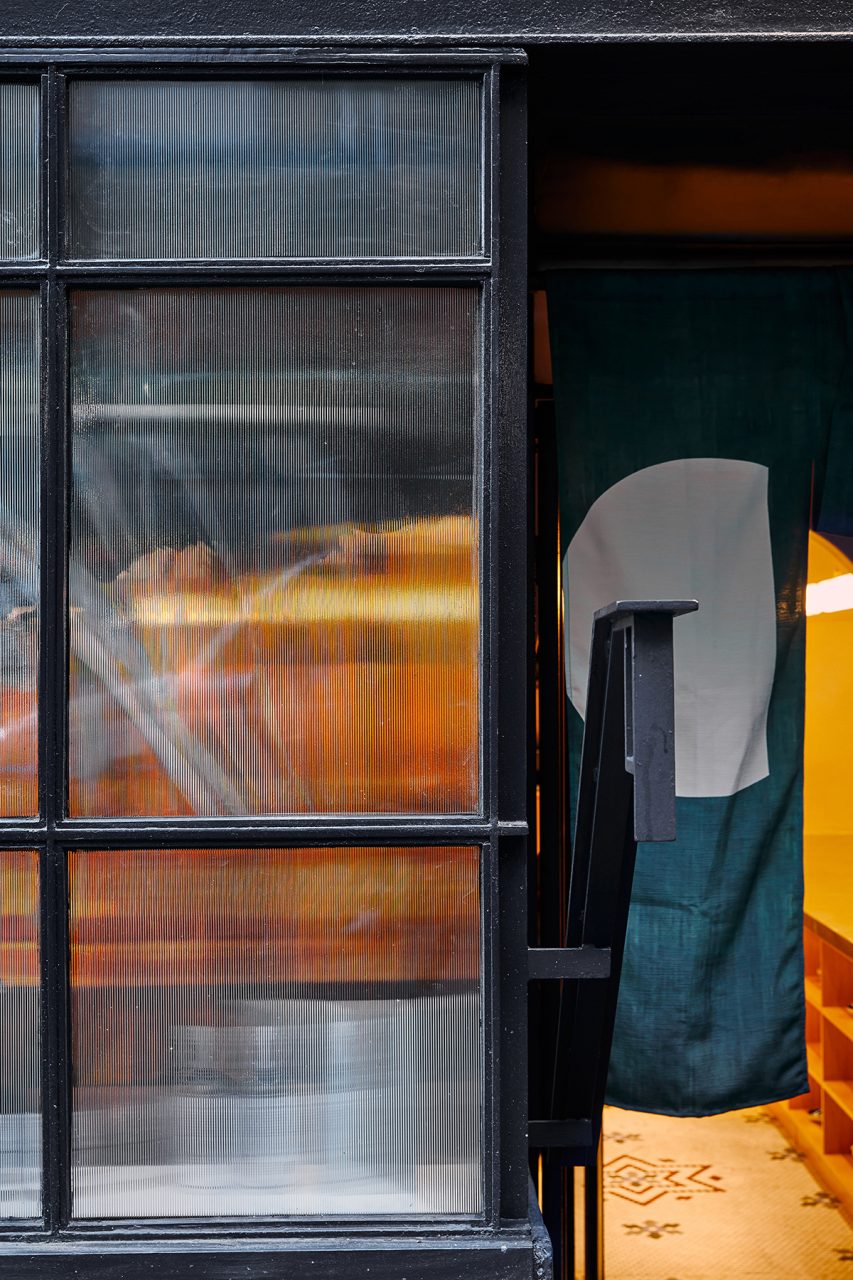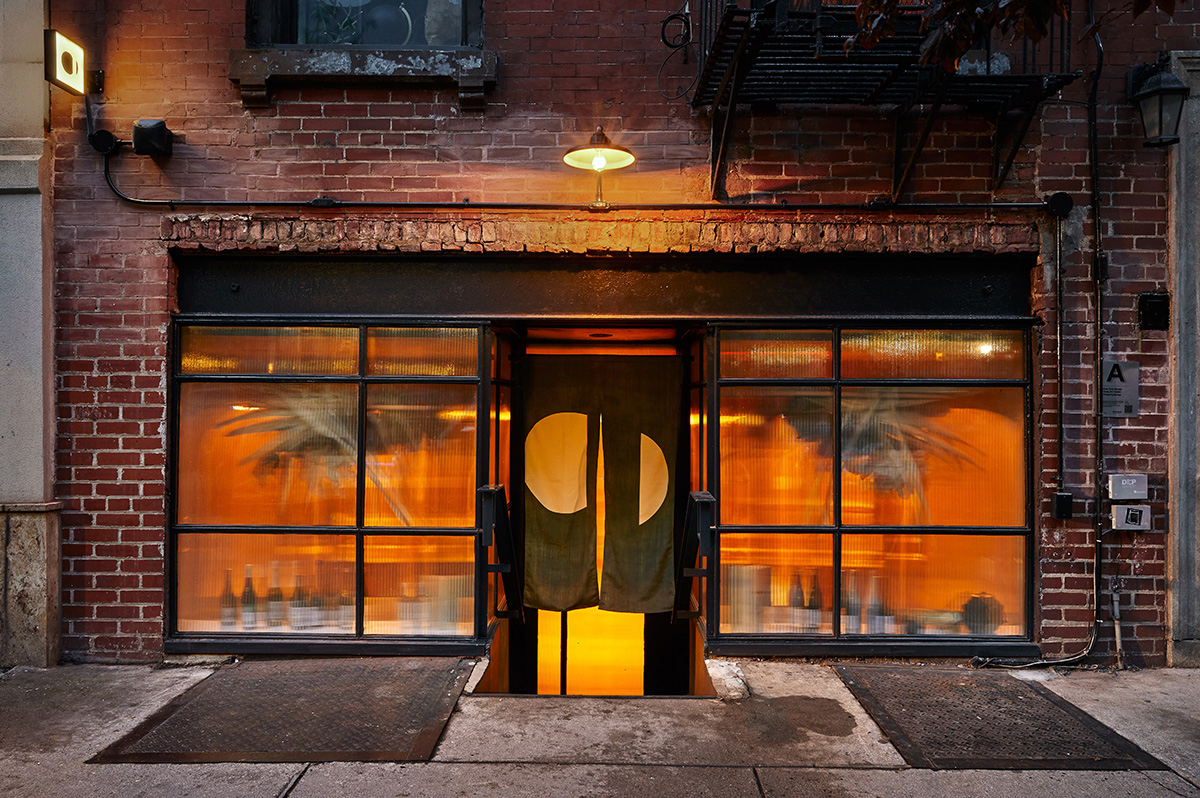An assuming brick building in New York’s East Village houses an elegant and warm Japanese restaurant on its first floor that’s been designed as an ode to the mid-autumn full moon. Tsukimi, located at 228 East 10 St., recently opened under the guise of renowned chef Takanori Akiyama and was inspired by the festival tradition of tsukimi, or “moon viewing,” which happens at the start of fall harvest each year.
Designed by Brooklyn-based firm Studio Tack, the modest space “aids in slowing the mind down” and utilizes both expressive and simple patterns to focus guests on intentional eating and community. White oak is the primary material found throughout the restaurant and is visible in everything from the two communal tables that face each other, to the shelves underneath, and the tambour wall paneling behind. The soft tones of the wood and its various textures are mixed to produce a comforting and relaxed feel. The design team further honed in on the tsukimi symbolism by enveloping the interior with a pleasant glow, one that also extends to the street via the corduroy glass on the windows.

Passersby won’t notice a giant neon sign inviting them in for dinner. Only the restaurant’s logo of a full moon etched in a box light above the entrance signals its presence. It’s a subtle nod to the traditionally quiet way the Japanese observe tsukimi at home with family and friends, but the interior was made to be more lively. Studio Tack introduced a series of Alabaster light pendants by Atelier Alain Ellouz above the elongated tables, as well as sconces by Allied Maker and multiple mirrors made to reflect the movement happening in the space. Even the unlacquered brass countertops shine back the light above. All these design moves mimic the indirect way the Japanese look at the moonlight during tsukimi: by gazing at its reflection through water or its diffusion across a landscape.
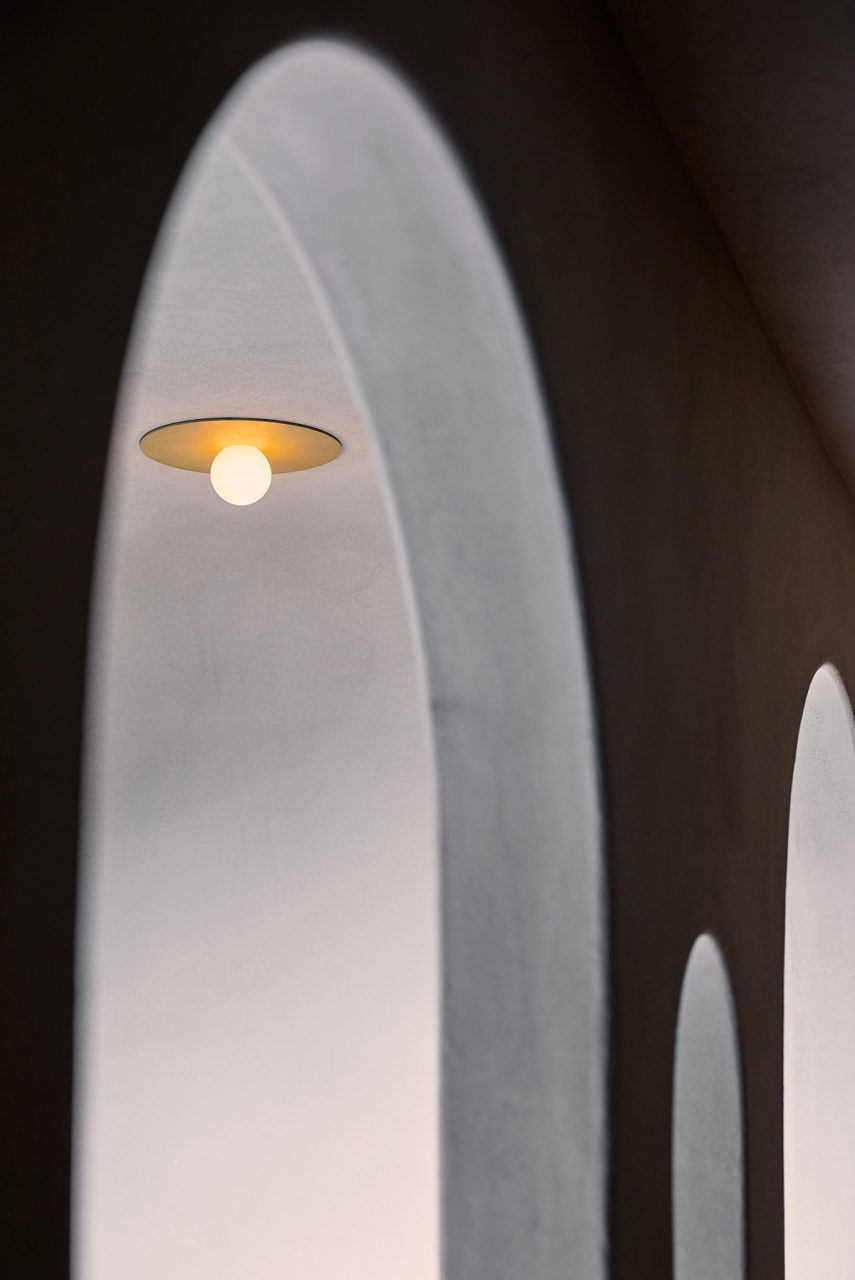
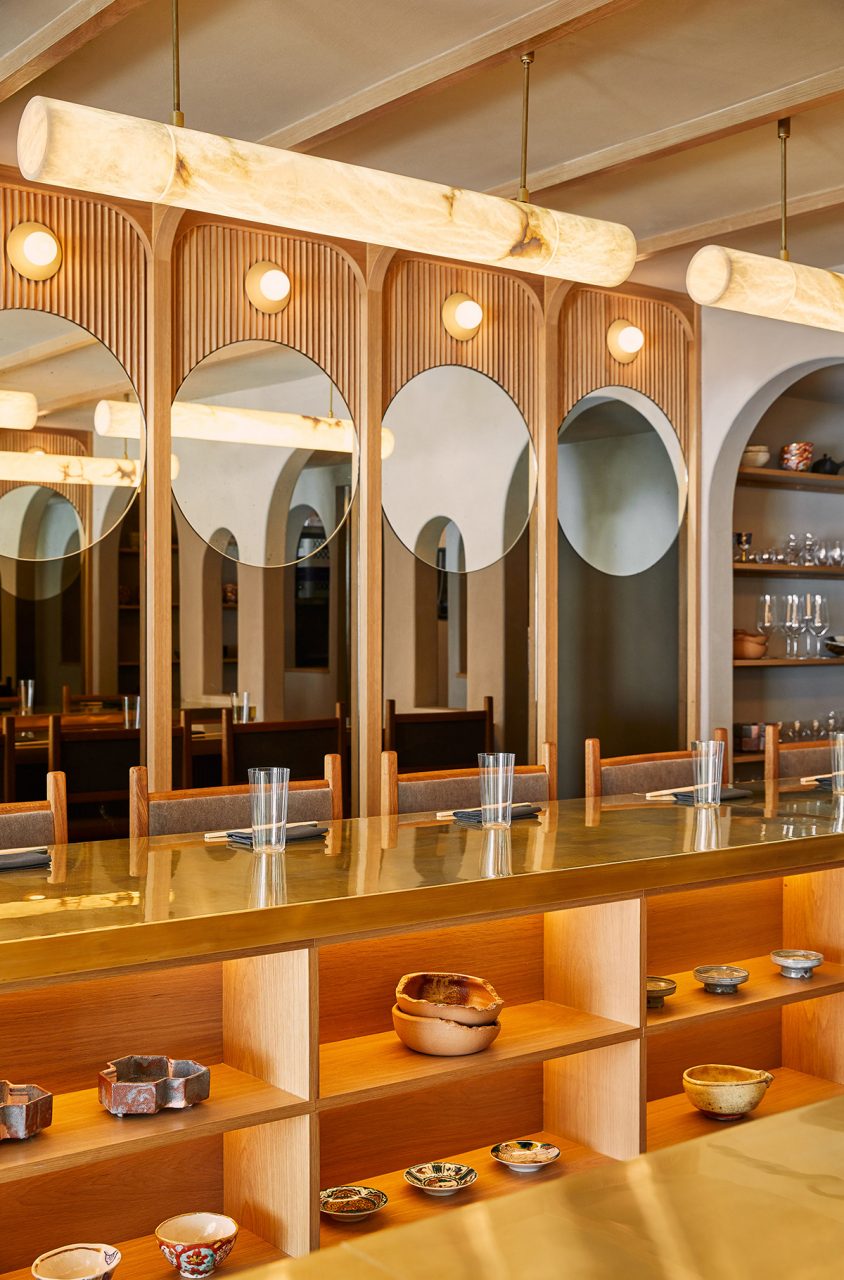

While it’s small, the 14-seat restaurant provides guests a personal setting to experience the space and feast on the multi-course meal provided by Chef Akiyama. One of the most interesting facts about Tsukimi is that the building itself is where Akiyama and General Manager Karen Lin worked together once before. The design team kept the original mosaic floor as a reminder of their connection to the site. It’s on full display in the center aisle of the restaurant which leads directly to the kitchen.

Tsukimi’s menu, just like its architectural design, is minimalist and centered around comfort food. During the fall festival, the Japanese enjoy foods such as the tsukimi dango, a small rice dumpling, that’s typically displayed on an altar as an offering and prayer for a good harvest season. Chesnuts, taro, and Japanese pumpkin are also staples of Tsukimi. Akiyama will craft bold yet classic seasonal flavors for the dishes on his 11-course Kaiseki tasting menu. As the executive chef at nearby SakaMai, he’ll integrate his signature “egg on egg on egg” concept for Tsukimi but with major flare using caviar, uni, and egg over sushi rice.

